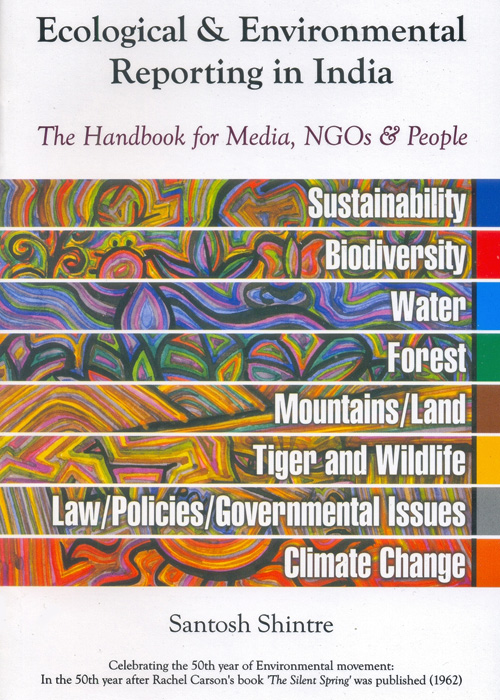Ecological and Environmental Reporting in India: The Handbook for Media, NGOs and People
Author: Santosh Shintre
Publisher: Sakal, 2013
Price: Rs 490.00
Reviewed by Prema Naraynen
Despite the growth of social media in the last few years, it is still the mainstream media that influences public opinion. “Of the 82,222 newspapers and 626 television channels in the country, space allotted to coverage of environmental issues in less than 1.5 percent,” states Shintre in the Preface to his Handbook.
Look up the website of any leading English daily in India: ‘Environment’ is usually not a marker you can reach easily; in the Hindu it’s nestled under ‘Science and Technology’, in the Hindustan Times, there just is no label. News is usually a few days old, unless it’s a commemorative day like World Water Monitoring Day (which falls right behind the all-important Talk Like a Pirate Day), when bytes and statistics are quickly put together to make an article and the accompanying ‘graphic’.
So how does one reach the Indian people – a population that has more than tripled since 1950, a sizeable majority of which is showing an alarming swing towards Western consumerist patterns – and inform them about the environmental issues they face? Shintre does not have the answer to that, but what he does do in this book is provide a key to the basic information a young student of journalism would need to take up that ominous task.
Shintre walks the reader through 12 chapters covering fundamental pointers in Principles, Sustainability, Biodiversity, Water, Forests, Land, Wildlife, Law, and Climate Change. Each chapter features ‘Likely errors’ a reporter could make and ‘Issues worth reporting’. There are several accompanying tables and charts, which sadly have not been numbered or properly cited. This is a book that needed a good editor.
Personal recollections from journalists already working the beat would have been very useful for such a book. In The Green Pen which Shintre cites in his Acknowledgements, Dionne Bunsha mentions sneaking in environment stories in the Times of India on “lean days like Sundays and Mondays when [the paper] was desperate to fill the pages with copy.” In the highly corporatised media environment of today, when few eyelids are batted when a major newshouse ties up with a mining company with a dubious record, young reporters will have to take a trick from Bunsha’s sleeve if they want to be heard at all.
Shintre’s book will hopefully be the trigger that gets young minds to look at environmental journalism as a necessary option, if not always a viable option.
The book is available from the publisher’s website.
About the reviewer – Prema Naraynen is a freelance writer and the publisher of Rainfed Books.


 CI is a non-profit, non-commercial portal that aims to facilitate wildlife and nature conservation by providing reliable information and the tools needed to campaign effectively.
CI is a non-profit, non-commercial portal that aims to facilitate wildlife and nature conservation by providing reliable information and the tools needed to campaign effectively.